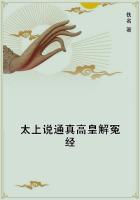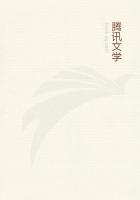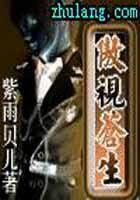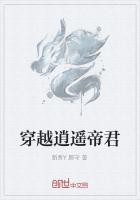Before blankets can be made the wool must be cut from the sheep, cleaned, carded, spun and dyed. It is one of the interesting sights of the southwest region to see a flock of sheep and goats running together, watched over, perhaps, by a lad of ten or a dozen years, or by a woman who is ultimately to weave the fleeces they carry into substantial blankets. After the fleece has been sheared, the Navaho woman proceeds to wash it. Then it is combed with hand cards,--small flat implements with wire teeth, purchased from the traders. (These and the shears are the only modern implements used.) The dyeing is often done before the spinning but generally after. The spindle used is merely a slender stick thrust through a circular disc of wood. In spite of the fact that the Navahos have seen the spinning wheels in use by the Mexicans and Mormons, they have never cared either to make or adopt them. Their conservatism preserves the ancient, slow and laborious method. The Navahos live on a reservation which covers several hundred square miles, extending along the northern borders of New Mexico and Arizona where few travelers go. They do not live in villages or settlements and their homes are so scattered that one may travel a whole day without finding a woman at work with her loom. Day after day, however, one may see the carding, spinning and weaving processes in the Hopi House at El Tovar, where a little colony of Navahos is maintained.
Holding the spindle in the right hand, the point of the short end below the balancing disc resting on the ground and the long end on her knee, the spinner attaches the end of her staple close to the disc and then gives the spindle a rapid twirl. As it revolves she holds the yarn out so that it twists. As it tightens sufficiently she allows it to wrap on the spindle and repeats the operation until the spindle is full. The spinning is done loosely or tightly, according to the fineness of the weave required in the blanket.
The quality and value of a Navaho blanket is governed largely by the fineness of the weave. The yarn in some of the cheaper qualities now made is often coarse and loosely spun, and the warp, or chain, which has much to do with the life of a blanket, may be improperly spun and of uneven strength. A blanket of a given size may be made in two weeks, or in four, or in two months, according to the quality of the work and the skill of the weaver. Next in importance to the fineness of the weave is the proper blending of colors. Though a woman may have the highest skill in her primitive art, she must take time to study out the color scheme for her blanket. These are the principal factors, but there are others which enter into the making of a blanket, and the finer the product of the loom the more difficult the work becomes.
There are still a limited number of very fine blankets made. The number is governed largely by the demand.
In the original or natural colors there are white, brown, gray and black;the latter rather a grayish black, or better salt, as Mathews describes it, "rusty." Many of the best blankets now produced are of these natural colors, with sometimes a touch of red.
There are certain Navaho blankets much sought after by the collector, especially those rare old specimens made of purely native dye, the colors of which have softened into harmonious tones. These have not been made for many years past and most of the specimens in perfect state of preservation that are in existence were obtained from Mexican families where they had been handed down from generation to generation as heirlooms. Often in these old specimens the red figures were made of bayeta. As Mason says: "The word 'bayeta' is nothing but the simple Spanish for the English 'baize' and is spelled 'bayeta' and not 'ballets' or 'valets.'" Formerly bayeta was a regular article of commerce. It was generally sold by the rod and not by the pound. Now, however, the duty is so high that its importation is practically prohibited.
This bayeta or baize was unravelled and the Indian woman often retwisted the warp to make it firmer. She then rewove it into her incomparable blankets.
From the earliest days the Navahos have been expert dyers, their colors being black, brick-red, russet, blue, yellow, and a greenish yellow akin to an old gold shade.
There is abundant evidence that they formerly had a blue dye, but indigo, originally introduced probably by the Mexicans, has superceded this. If in former days they had a native blue or yellow they must of necessity have had a green. They now make green of their native yellow and indigo, the latter being the only imported dye stuff in use among them.
To make the black dye three ingredients were used: yellow ochre, pinion gum and the leaves and twigs of the aromatic sumac (thus aromatics). The ochre is pulverized and roasted until it becomes a light brown, when it is removed from the fire and mixed with an equal quantity of pinion gum. This mixture is then placed on the fire and as the roasting continues it first becomes mushy, then darker as it dries until nothing but a fine black powder remains. This powder is called "keyh-batch." In the meantime the sumac leaves and twigs are being boiled. Five or six hours are required to fully extract the juices. When both are cooled they are mixed and immediately a rich, bluish-black fluid called "ele-gee-batch" is formed.
For yellow dye the tops of a flowering weed (Bigelovia graveolens) are boiled for hours until the liquid assumes a deep yellow color. As soon as the extraction of color juices is complete the dyer takes some native alum (almogen) and heats it over the fire. When it becomes pasty she generally adds it to the boiling concoction, which slowly becomes of the required yellow color,--"kayel-soly-batch."The brick red dye, "says-tozzie-batch," is extracted from the bark and the roots of the sumac, and ground alder bark, with the ashes of the juniper as a mordant. She now immerses the wool and allows it to remain in the dye for half an hour or an hour.

